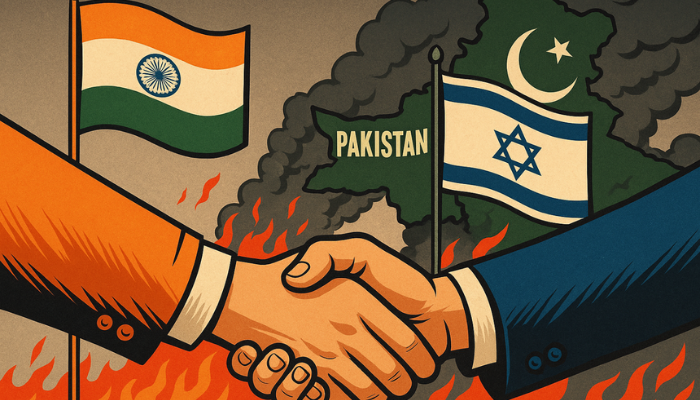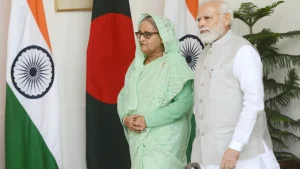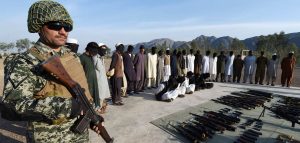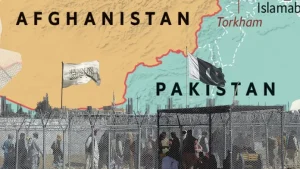Following the May 2025 confrontation between India and Pakistan, a worrying shift in Pakistan’s security environment is evident. During the four days of conflict, Pakistan’s conventional deterrence remained intact by defeating the Indian military adventure; but there was a concurrent upsurge in terrorist activities in Pakistan. From May to July, independent assessments counted more than 240 militant attacks, leaving over 300 people dead and nearly 500 injured. The concentration of violence in Balochistan and Khyber Pakhtunkhwa (KP) suggests that Pakistan’s adversaries, unable to impose dominance through military confrontation, have shifted their efforts toward covert and irregular warfare.
Escalating Violence along the Western border
A review of trends before and after the May conflict highlights a marked shift in terrorists’ violence. Between January and April 2025, militant activity escalated but was progressively contained through intelligence-led operations. January witnessed 74 attacks nationwide, resulting 91 deaths, with KP and Balochistan being worst affected. In February, incidents rose to 79, with civilian fatalities increasing by 175 percent; however, security forces responded forcefully, eliminating 156 militants. March proved the most violent month in over a decade, with 105 attacks and 335 deaths, including six suicide bombings and the BLA’s hijacking of Jaffar Express. Yet April brought a reversal: attacks fell by 22 percent to 82, and militants accounted for over 70 percent of all fatalities. Furthermore, a major two-phase operation near the Pakistan–Afghan border killed 71 TTP fighters, delivering the group its heaviest single loss. Civilian and security casualties declined significantly, making April the least costly month for security forces since mid-2024.
When India attacked Pakistan on 7th May 2025 and escalated the India-Pakistan conflict in response to a terrorist attack in Indian Occupied Kashmir, there was a surge of terrorist attacks in Pakistan simultaneously. Violence surged again to levels comparable to March, reversing the gains of April. In May alone, 85 attacks killed 113 people and injured 182, with Balochistan absorbing 35 incidents that left 51 dead and 100 wounded. June saw 27 further attacks, six of them in Balochistan, while July recorded another 82 nationwide, 28 in Balochistan, bringing the three-month toll to more than 320 dead and over 500 injured. In short, while early 2025 showed that militant activity could be contained, the post-May rebound underscored a deliberate effort to impose pressure on Pakistan’s western frontier.
The attacks became broader in scope: girls’ schools, polio vaccination teams, peace committee volunteers, energy projects, and China-Pakistan Economic Corridor (CPEC)-linked infrastructure were all hit. Counterterrorism operations inflicted losses, including 106 militants killed in July. Moreover, the persistence and diversity of attacks point to an external effort to sustain pressure on Pakistan, once India’s conventional attack had failed.
India’s Sub-Conventional Strategy
The timing of this surge lends weight to long-standing Pakistani claims that India provides support to anti-state groups across the Western border. The 2016 arrest of Indian intelligence operative Kulbhushan Jadhav, and his admission of links to the Balochistan Liberation Army (BLA) and Baloch Republican Army (BRA), created a precedent for such concerns. Both groups, alongside the banned Tehreek-e-Taliban Pakistan (TTP), have regained operational space in 2025. With KP and Balochistan accounting for nearly 80 percent of recent attacks, the impression of coordination and external facilitation seems undeniable.
Indian support is not confined to the separatist outfits. Islamabad has repeatedly charged New Delhi with channeling resources to the banned TTP. The resurgence of violence in KP illustrates the scale of the challenge. In July 2025, 53 of 82 recorded nationwide attacks took place in the province, showing how persistent pressure in the tribal belt complements separatist activity in Balochistan. This twin focus compels Pakistan to stretch its security resources across multiple fronts, creating vulnerabilities and testing social cohesion. These assessments are not limited to Islamabad. The United Nations Secretary General’s 2025 counterterrorism report warned that militants from the former Syrian conflict could relocate to Afghanistan, while Islamic State- Khorasan (ISIL-K) with an estimated 2,000 fighters, continues to pose one of the most significant threats in South and Central Asia. Addressing the Security Council, Pakistan’s representative argued that the external sponsorship of groups such as the banned TTP and BLA are compounding this threat. The overlap between local militancy and outside facilitation highlights how sub-conventional tactics are being used to maintain instability along Pakistan’s western frontier.
The Indo-Israeli Nexus
A related dimension is India’s expanding security relationship with Israel. Over the past decade, bilateral defense and intelligence cooperation has grown steadily, with Israeli drones, surveillance platforms, and cyber tools incorporated into Indian military operations. In parallel, Israeli research institutions have begun to influence discourse around Pakistan. The Middle East Media Research Institute (MEMRI), for instance, recently launched a Balochistan Studies Project and appointed Mir Yar Baloch -reported to have ties with the BLA – as a Special Advisor . These efforts, disguised as scholarly, have the effect of attempting to misrepresent Balochistan as a geopolitical fault line within a broader region.
Some of these activities blur the distinction between independent analysis and strategic advocacy. They are also consistent with broader hybrid strategies where militant actions are augmented by disinformation, lobbying, and digital campaigning.
Why Pakistan and Iran Must Cooperate
In this context, a cooperative strategy is also needed between Pakistan and Iran. The two countries need to develop and deepen security cooperation. Both face cross-border threats from militant groups exploiting weak frontier controls. Similar insurgent networks have targeted the Iran’s Sistan-Balochistan. If left unchecked, these groups would perpetuate terrorism with impunity across the borders.
Practical cooperation could involve tighter border surveillance, joint intelligence mechanisms, and coordinated counterterrorism actions. At the political level, Islamabad and Tehran could adopt a united position against external interference, resisting attempts to internationalize the Balochistan issue. With China already heavily invested in CPEC and building closer ties with both Pakistan and Iran, trilateral coordination could provide additional deterrence against sub-conventional threats.
The pattern since May 2025 shows a clear shift. Having failed to impose costs through conventional military means, India appears to be relying more on covert and sub-conventional measures. The concentration of violence in Balochistan and Khyber Pakhtunkhwa, combined with Indo-Israeli cooperation and external narrative-building, reflects a hybrid strategy designed to weaken Pakistan internally.
For Islamabad, the response must operate on two fronts. Domestically, counterterrorism structures require further refinement, and community-level resilience must be strengthened. Regionally, sustained cooperation with Iran and constructive engagement with China and other partners will be necessary to address the cross-border terrorism. Just as Pakistan’s conventional deterrence held firm in May 2025, a comprehensive approach to sub-conventional threats will be critical to ensuring that adversaries cannot achieve through proxies what they failed to secure through confrontation.
















